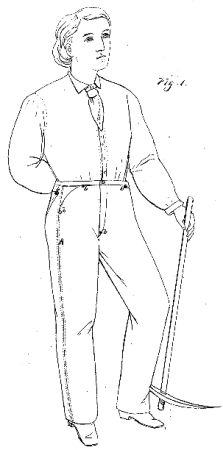When we are asked about inventions, it's easy to name state-of-the-art smart phones or recently developed drugs. But, we often overlook some of the most ingenious ideas that manifest themselves in the very simplest of products.
It's no secret that the latest gadgets are packed with patents. Apple, for example, has filled over 200 patents for technology relating to the iPhone since its release in 2007. But, you don't need to understand the ins and outs of 3D imaging to create an invention.
Jeans
Arguably the most popular clothing item, this invention has found a place in each one of our wardrobes. Nearly 150 years ago, Jacob Davis, a tailor and customer of wholesaler Levi Strauss & Co. generated an idea in an attempt to strengthen the trousers of a customer who kept tearing their pockets. By using metal rivets at each edge of the pocket-openings, Davis was able to prevent the seam ripping at those points.
Realising that his idea was worth more than one custom order, he wrote to Levi Straus who funded U.S. Patent No. 139,121 for Fastening Pocket-Openings. An item that first sold for $3 went on to become the incredibly popular Levi's jeans.

The Popsicle
Over a century ago, in the San Francisco Bay Area an 11 year old, Frank Epperson, poured some sweet soda powder into water, mixed it with a wooden stirrer and left it out on a cold night. Epperson discovered the mixture had frozen to the stirrer and called his invention the 'Eppsicle'.
Epperson went on to file a patent for a 'frozen confection of attractive appearance, which can be conveniently consumed without contamination by contact with the hand and without the need for a plate, spoon, fork or other implement'. His children started to call the treat a 'popsicle' which still remains a delicacy to this day.

Correction Fluid
In the 1950s, Bette Nesmith Graham, an American typist decided she no longer wanted to reach out for a new piece of paper every time she made a mistake. She approached her son's chemistry teacher, and together they created a fluid that could paint over a mistake. The first batch was mixed up in Graham's kitchen using tempera fluid and a blender.
For five years, Graham kept this idea secret until she decided to release the product "Mistake Out" after being fired from her job. Her company, later labelled 'Liquid Paper' manufactured 25 million bottles per year before Graham sold it to Gillette Corporation.
The content of this article is intended to provide a general guide to the subject matter. Specialist advice should be sought about your specific circumstances.

